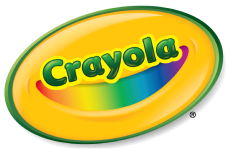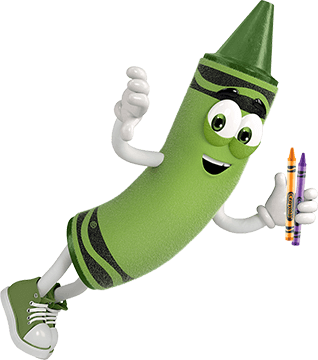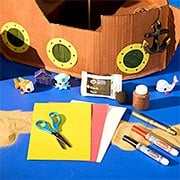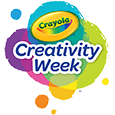Los ingredientes básicos contenidos en los lápices de colores Crayola son la cera de parafina y el® pigmento de color. Estos ingredientes son los mismos para todos los colores de Crayola Crayon, con algunas modificaciones en los crayones de efectos especiales.
Los lápices de colores comienzan a derretirse alrededor de 105 ° Fahrenheit y tienen un punto de fusión entre 120 ° y 147 ° Fahrenheit. El punto de fusión es el mismo para todos los lápices de colores Crayola normales; Sin embargo, la densidad y la cantidad de pigmento incluido en los diferentes crayones darán como resultado un grosor o viscosidad variables de la mezcla.
Si tienes preguntas adicionales, ¡nos encantaría saber de ti! No dudes en llamarnos o enviarnos un mensaje de texto al 1-800-CRAYOLA días laborables entre las 9 AM y las 4 PM hora del Este. Si prefieres enviarnos un correo electrónico, visita nuestra página de contacto.
Preguntas relacionadas
Explora respuestas a preguntas comunes, consejos útiles para eliminar manchas e ideas creativas para aprovechar al máximo nuestros materiales de arte y recursos gratuitos.
-
Introduced in 1998, Crayola® offers a variety of colored pencil assortments that are the essential creative tool for kids or the art enthusiast. Crayola colored pencils are manufactured in Brazil, Costa Rica or Vietnam due to their high-volume manufacturing capabilities.
The process of making Crayola Colored Pencils begins in the forest. Seedlings, which are young trees, are planted in fields much like a farmer plants a crop. Seedling crops grow into trees which are eventually used to make wood casings for the pencils. After several years, the trees are harvested, cut into even lengths, stacked onto trucks and shipped to the sawmill. Then, a new crop of seedlings is planted to replace those which have been harvested.
At the sawmill, lumber arriving by the truckload is stacked in large piles and allowed to dry. Once dry, the lumber is fed into a bark stripping machine which removes all the bark from each piece of lumber. Next, the lumber goes through a series of milling machines which cuts the lumber into rectangular slats. These slats are about as long as a colored pencil and about three inches wide. The slats are the building blocks for the production of colored pencils.
The slats are then transported to the pencil making plant. Here they are fed into another milling machine which cuts small semicircular grooves at regular intervals down the length of each slat. These grooved slats are now ready to accept a colored pencil core.
To make a Crayola Colored Pencil core, you need four raw materials:
- Extenders - which make up the body of the lead.
- Binders - to hold the ingredients together.
- Pigment - which gives each type of colored pencil its unique color.
- Water – to mix all the ingredients.
First, the extenders, binders, pigments and water are placed in a large mixer which gently kneads them together into a uniform doughy substance. When the mixing is complete, the contents of the mixer are rolled into flat sheets. Finally, these sheets are machine-pressed into large, long solid cylinder shapes. These shapes are called cartridges.
Each cartridge, while still damp and pliable, is inserted into another machine called an extrusion press, where it is forced through a small tube. The tube has a diameter equal to that of a colored pencil core. As the long rope of wet colored core comes out, an automatic slicer cuts it into equal lengths approximately as long as a colored pencil. Since the leads are still quite moist, they must be dried in large ovens before they become hard enough to insert into the slats.
To assemble the pencils, half of the grooved slats are fed into a machine which carefully lays a colored pencil core into each groove. Then a layer of glue is applied, and a second grooved slat is placed on top of the slat holding the lead. Think of this as a pencil sandwich, with each slat acting like a piece of bread and the color cores acting like the filling.
These pencil sandwiches are then bound very tightly together and placed into storage to give the glue time to dry. Once the glue is dry, they are fed into another milling machine which cuts them into individual colored pencils. Depending on the design of colored pencils, they are cut into either round or hexagonal shapes.
Next, the pencils are fed into a machine to be painted with the same color paint as the colored core. The pencils run down a conveyor belt to allow the paint to dry. The painted pencils are then sent to a machine to be automatically sharpened.
Finally, brightly colored finished pencils are packed into boxes, which are shipped to neighborhood stores.
Crayola Colored Pencils are used by people of all ages for everything from crafts to professional artwork and school projects. Learn more about Crayola Colored Pencils products.
-
We currently use 12 different colored labels for CRAYOLA Crayons. The labels are purchased through an outside vendor and made of either vat dyed construction paper or printed paper and reforested wood. We manufacture more than 120 different Crayola Crayon colors, however, we do not have a crayon label to match each of these colors.
-
All Crayola® Crayons are made with paraffin wax and color pigment. The crayons vary slightly in weight due to the amount of color pigment added to make each color as well as the density of the powder pigment itself. Even though certain color pigments are very light, and others are very dense, that doesn't mean all dark crayons are heavier. Test this in your laboratory by doing an experiment to see which Crayola Crayons float and sink in water.
-
Crayola® Crayons are made using primarily paraffin wax and color pigment. While the basic ingredients remain consistent across all colors, variations may occur in special effects crayons.
Our crayons are crafted through a process that involves melting paraffin wax and blending it with color pigments. This mixture is then poured into molding machines where it solidifies in four to seven minutes. For a behind-the-scenes look at the Crayola crayon manufacturing process, watch the video "You've Got Crayola Crayons" on YouTube.
-
No, they do not. Crayola crayons and markers are packed in random order depending on the manufacturing schedule.




